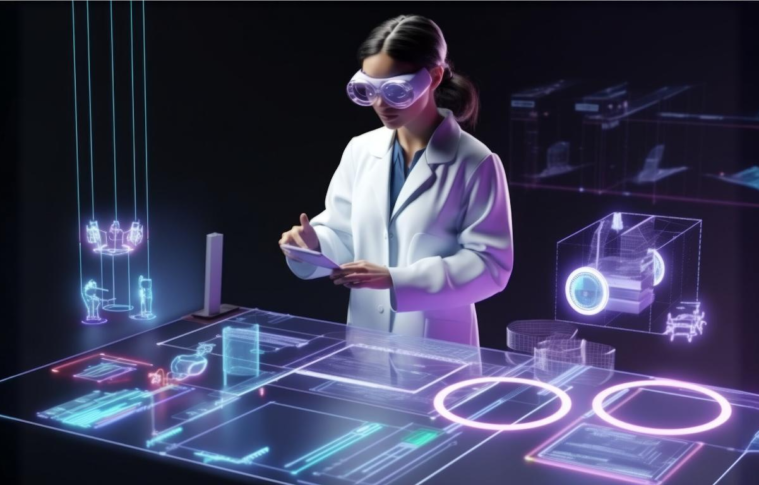Introduction
Nanotechnology, the manipulation of matter at the atomic and molecular scale (typically 1 to 100 nanometers), is revolutionizing various industries, with healthcare being one of the most promising sectors. The ability to design and fabricate nanoparticles with specific properties allows for breakthroughs in diagnostics, treatment, and drug delivery. This case study explores the emerging applications of nanotechnology in healthcare and medicine, highlighting its potential to transform patient care and therapeutic outcomes.
Key Applications of Nanotechnology in Healthcare and Medicine
- Targeted Drug Delivery
Traditional drug delivery systems often face challenges such as low bioavailability, poor targeting, and side effects. Nanotechnology enables the design of nanoparticles that can precisely target specific cells or tissues, such as cancer cells, while minimizing damage to healthy cells. This targeted approach enhances the efficacy of drugs and reduces adverse effects.
Example:- Doxil: One of the first FDA-approved nanoparticle-based drug delivery systems, Doxil is used in the treatment of cancer. The liposomal formulation of the drug allows it to be delivered directly to the tumor site, improving its therapeutic effect and reducing side effects.
- Diagnostic Imaging and Biosensors
Nanotechnology is also transforming diagnostic techniques by enabling the creation of highly sensitive biosensors and contrast agents for imaging. These nanomaterials can detect disease markers at the earliest stages, facilitating early diagnosis and personalized treatment plans.
Example:- Quantum Dots: These semiconductor nanoparticles are being developed for imaging purposes. Their ability to emit bright, stable fluorescence makes them ideal for in vivo imaging, allowing for the detection of diseases like cancer at a molecular level.
- Cancer Treatment and Immunotherapy
Nanotechnology plays a significant role in cancer treatment, particularly in improving the delivery of chemotherapy and enhancing the effectiveness of immunotherapies. By modifying nanoparticles to carry chemotherapy drugs or antibodies, it is possible to enhance the immune system’s ability to fight cancer cells.
Example:- Nanoparticle-Based Vaccines: Researchers are exploring the use of nanoparticles to deliver antigens to the immune system, prompting a stronger immune response against cancer. For instance, nanoparticles can help create cancer vaccines that stimulate the immune system to recognize and destroy cancer cells.
- Wound Healing and Regenerative Medicine
Nanomaterials are being investigated for their ability to enhance wound healing and promote tissue regeneration. Nanofiber scaffolds and nanoparticles can accelerate tissue repair by providing a structure for cells to grow and promoting the formation of blood vessels.
Example:- Silver Nanoparticles: These nanoparticles possess antimicrobial properties, making them useful in treating wounds and preventing infections. Silver-based nanomaterials are being incorporated into wound dressings to speed up healing and reduce the risk of infection.
- Personalized Medicine
Nanotechnology enables the development of highly personalized medical treatments. By analyzing the genetic makeup and specific needs of individual patients, healthcare providers can use nanodevices to tailor therapies that are more effective and less likely to cause side effects.
Example:- Nanoparticle Drug Carriers: These can be engineered to release drugs at specific sites in the body in response to biological markers, ensuring that the treatment is specifically targeted to a patient’s condition. This can be particularly useful in treating complex diseases like cancer, where traditional treatments are not as effective.
Challenges and Considerations
- Safety and Toxicity
One of the primary concerns with nanotechnology in medicine is the potential toxicity of nanoparticles. Since nanoparticles are extremely small, they can enter cells and tissues in unexpected ways, which may pose risks to human health. Extensive studies and regulatory frameworks are necessary to ensure the safe use of nanomaterials in medical applications. - Regulation and Standardization
The use of nanotechnology in healthcare requires clear regulatory guidelines to ensure consistency and safety. The variability in the properties of nanoparticles, such as their size, shape, and surface chemistry, makes standardization difficult. Regulatory agencies like the FDA are working to create frameworks for approving nanotechnology-based medical products. - Cost and Accessibility
While nanotechnology holds great promise, the high cost of research, development, and manufacturing of nanomedicines and devices could limit their widespread adoption, especially in low-resource settings. Making these technologies affordable and accessible is crucial for global healthcare improvement.
Conclusion
Nanotechnology is poised to revolutionize healthcare and medicine by enabling targeted drug delivery, enhancing diagnostics, improving cancer treatments, and promoting tissue regeneration. Although the technology holds immense promise, several challenges remain, including safety concerns, regulatory hurdles, and cost issues. Nevertheless, ongoing research and development in nanomedicine are likely to yield transformative treatments that will improve patient outcomes and healthcare quality in the future. As these technologies become more refined and accessible, nanotechnology is expected to play a central role in personalized and precision medicine, offering more effective and safer healthcare solutions.



